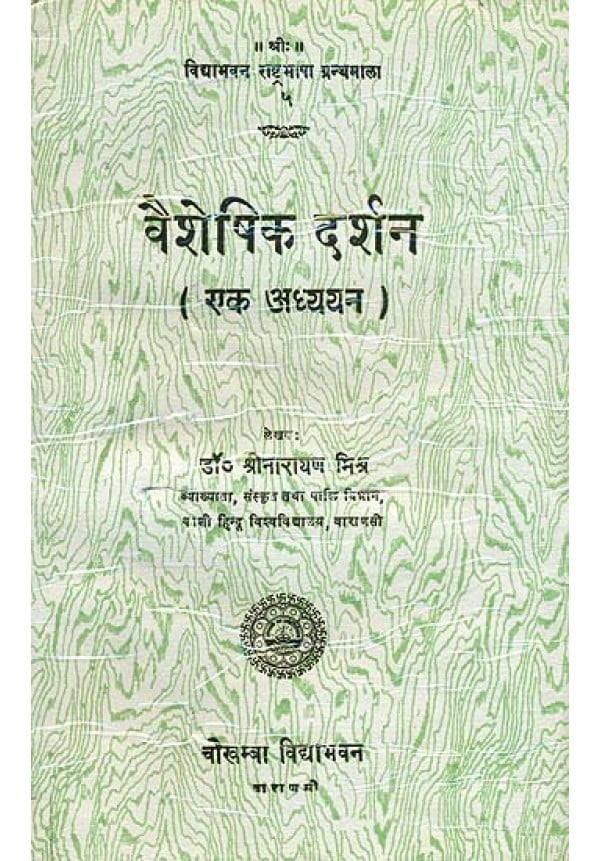Author: Kanada
About the author:
Kanada, also known as Kashyapa or Uluka, was an ancient Indian sage and philosopher credited with founding the Vaisheshika school of Hindu philosophy. His work laid the foundation for one of the six classical systems (darshanas) of Indian philosophy, which is known for its emphasis on atomism and metaphysics.
Life and Background
Historical Context:
- Kanada is believed to have lived around the 6th century BCE, though exact dates are uncertain. His contributions are primarily documented in the “Vaisheshika Sutra,” a key text in Indian philosophy.
Name and Etymology:
- The name “Kanada” is derived from the Sanskrit word “kana,” meaning “atom” or “small particle.” This name reflects his philosophical focus on the atomic composition of the universe.
Contributions to Philosophy
Vaisheshika Sutra:
- The “Vaisheshika Sutra,” attributed to Kanada, is a seminal text that outlines the principles of the Vaisheshika school. It is composed of concise aphorisms (sutras) that systematically address the nature of reality, categorization of substances, and the theory of atomism.
Key Concepts:
- Atomism:
- Kanada is best known for his atomic theory, which posits that everything in the universe is composed of indivisible, indestructible atoms (anu). He proposed that these atoms combine in various ways to form the complex structures of the physical world.
- Dravya (Substance):
- Kanada identified nine categories of substances: earth, water, fire, air, ether (space), time, direction, mind, and soul. These substances form the basic building blocks of the universe.
- Guna (Quality):
- He categorized qualities (gunas) that inhere in substances, such as color, taste, smell, touch, number, size, separateness, conjunction, and disjunction.
- Karma (Action):
- Kanada defined karma as the movement or activity associated with substances. It encompasses the physical and mental actions that drive change and motion in the universe.
- Samanya (Universality) and Vishesha (Particularity):
- Samanya refers to the universal properties that substances share, while Vishesha denotes the unique characteristics that distinguish individual substances.
- Samavaya (Inherence):
- Kanada introduced the concept of samavaya, an inseparable relationship that connects substances with their qualities and actions.
- Abhava (Non-existence):
- He also addressed the concept of non-existence, distinguishing between different types of absence or negation, such as prior non-existence, subsequent non-existence, mutual non-existence, and absolute non-existence.
Philosophical Significance
Metaphysics and Ontology:
- Kanada’s work laid the groundwork for systematic metaphysical inquiry in Indian philosophy. His categorization of substances and their properties provided a framework for understanding the physical and non-physical aspects of reality.
Epistemology:
- While Vaisheshika focuses primarily on metaphysics, it also addresses epistemological questions. Kanada recognized four means of valid knowledge (pramanas): perception (pratyaksha), inference (anumana), comparison (upamana), and verbal testimony (shabda).
Influence on Later Philosophical Traditions:
- Kanada’s ideas influenced other schools of Indian philosophy, particularly the Nyaya school, with which Vaisheshika later merged. This integration led to the development of the Nyaya-Vaisheshika system, combining logical analysis with detailed metaphysical exploration.
Scientific Relevance:
- Kanada’s atomic theory, though philosophical, bears a striking resemblance to modern scientific atomic theories. His work represents an early attempt to explain the composition and behavior of matter, showcasing a profound understanding of the natural world.
Legacy
Cultural Impact:
- Kanada’s contributions to Indian philosophy have had a lasting impact on the cultural and intellectual history of India. His ideas continue to be studied and revered by scholars and practitioners of Hindu philosophy.
Textual Influence:
- The “Vaisheshika Sutra” remains a foundational text in Indian philosophy, influencing subsequent commentaries and interpretations. Later philosophers expanded and refined Kanada’s ideas, ensuring their continued relevance and application.
Conclusion
Kanada, through his foundational work in the Vaisheshika school, made significant contributions to the understanding of the natural world and the nature of reality. His atomistic theory and systematic categorization of substances, qualities, and actions provided a comprehensive framework for metaphysical and scientific inquiry. Kanada’s legacy endures in the continued study and appreciation of his profound insights into the fundamental principles of existence.





